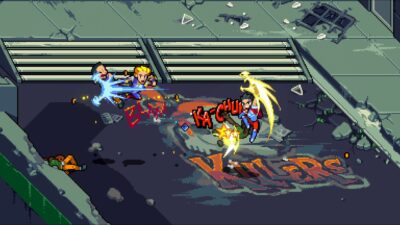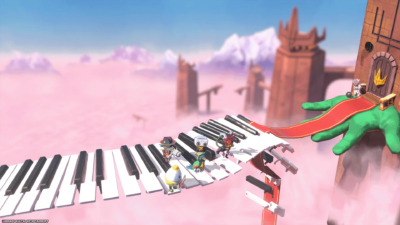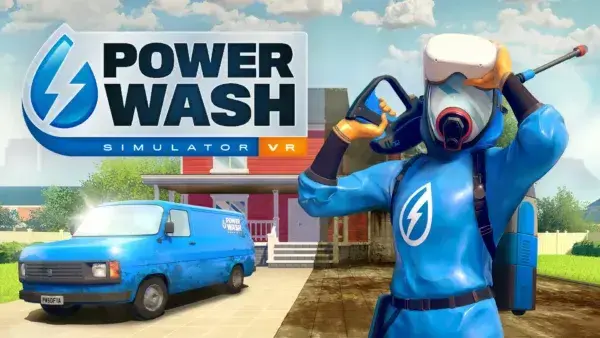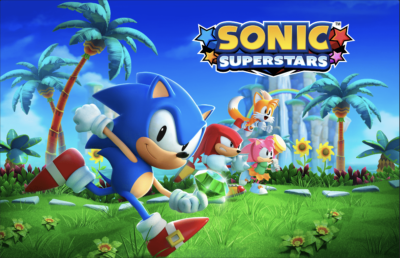
Having started out with the humorous point-and-click adventure series The Inner World, as well as working on children’s games for local German TV stations, Berlin-based Studio Fizbin’s next game is an evolution of its earlier work. Moving away from point-and-click mechanics, Minute of Islands is a real-time puzzle platform adventure, and although it still has you playing the role of a child protagonist and features gorgeous hand-drawn art, game director Anjin Anhut says his latest project is intended for an older audience. “The themes are actually pretty mature,” he explains. “Even though there’s little to no violence, things get a bit gruesome on the emotional side. So we wouldn’t expect the story to resonate with young children.”
Driven primarily by the team’s art director, Tim Gaedke, Minute of Islands’ art style is influenced by French and Belgian comics such as The Adventures of Tintin, which have a similar tradition of merging adult storytelling with stylised characters and environments. “(Gaedke) basically insisted on making something that doesn’t look like a game,” says Anhut. “And we think it allows us to connect to the character better than doing something where we risk going into the uncanny valley with photorealism. We think that the language this offers us, whether in character design or environmental design, is a stylisation that players can translate for themselves. And we think that this translation process makes it more accessible, and more endearing.”

You’ll encounter the giants, the creators of the strange machines, on your journey. Or are they merely hallucinations?
The detailed, handmade visuals certainly look incredible, and Anhut stresses that the team refrained from reusing assets as much as possible – which is pretty impressive, given there’s a considerable amount of them across a narrative adventure designed to be completed in a few hours. The story’s set on an archipelago consisting of seven islands, where an unknown calamity strikes at the start, releasing a mysterious cloud of poisonous spores. Naturally, it’s up to a young hero to save the day: it’s a popular trope Anhut admits they’re piggybacking on, but also deconstructing. “This trope of video games – putting all the pressure of saving the world on your shoulders – is normal in everyday life for a lot of people, even if they don’t realise it,” says Anhut. “And this is what the game explores with our protagonist, Mo, who finds that it’s not as easy as just drawing a sword from a stone, and being the chosen one.”

Grotesque images like these make it clear the game isn’t meant for young children.
Despite the sword-wielding Arthurian allusions, however, Mo is actually a mechanic, which is quite apt given the general mentality among the archipelago’s populace, where even the most beat-up things are cherished, and objects are constantly being reused and fixed up rather than discarded. Mo’s equivalent of the Master Sword, then, is the Omni Switch, which has the appearance of a magic wand but, as the name implies, functions as an all-purpose tool for solving puzzles. More specifically, the Omni Switch is essential for fixing machines that have been keeping the spores away all this time, and which were built by a race of giants who’ve all but vanished from the surface. Exactly where these giants are now, and why Mo is the sole character capable of wielding the Omni Switch, are both secrets Anhut is keen to keep to himself.

No need for confusing inventories: Mo’s handy Omni Switch is all you need.
What’s also different is that, while most hero journeys often involve discovering new places, these islands are actually places that Mo has visited before; her home sits on one of the larger central islands, where most of her people also live. It’s interesting traversing these environments and interacting with objects that don’t just trigger descriptions, but are pointedly memories, of which there are many to find. “They’re like a completionist mechanic, but they also have intrinsic value to round up the story and help you understand what Mo is going through in each specific island,” explains Anhut. “Depending on what each island is for in the story, these memories will get enhanced, and we hope that people want to trigger all of them to get the full picture.”

Ladders and switches open up shortcuts, although progress is still mostly linear as you move from island to island.
Of course, for players, these encounters will all be new, but in Mo’s context, she’s examining things she either forgot about, had pushed away, or had missed out on, so Minute of Islands is, in a sense, about reconnecting with the past. “Everything we designed is tailored for the emotional journey. The things she encounters are in a very specific order and have a specific purpose for her discovery,” hints Anhut, a bit cryptically, on the significance of both the islands and the game’s title, which refers to the unit of time, he confirms. “Actually, everything in the game is an externalisation. Without Mo at the centre, we wouldn’t need to shape the islands like we have. That doesn’t mean that everything is in her head – it just means that we use everything to tell her story.”
Genre: Narrative adventure
Format: PC / Mac / PS4 / Xbox One / Switch
Developer: Studio Fizbin
Publisher: Mixtvision
Release: Spring 2020





